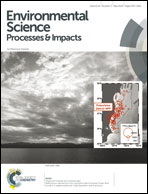Radiocesium derived from the Fukushima Daiichi Nuclear Power Plant accident in seabed sediments: initial deposition and inventories
Abstract
Since the accident at Fukushima Daiichi Nuclear Power Plant (1FNPP), significant levels of anthropogenic radionuclides have been detected in seabed sediments off the east coast of Japan. In this paper, the approximate amount of accident-derived radiocesium in seabed sediments off Fukushima, Miyagi and Ibaraki prefectures was estimated from a sediment integration algorithm. As of October 2011, about half a year after the accident, the total amount of sedimentary 134Cs was 0.20 ± 0.06 PBq (decay corrected to March 11, 2011) and more than 90% of the radiocesium was accumulated in the regions shallower than 200 m depth. The large inventory in the coastal sediments was attributed to effective adsorption of dissolved radiocesium onto suspended particles and directly to sediments in the early post-accident stage. Although rivers are also an important source to supply radiocesium to the coastal regions, this flux was much lower than that of the above-mentioned process within half a year after the accident.


 Please wait while we load your content...
Please wait while we load your content...